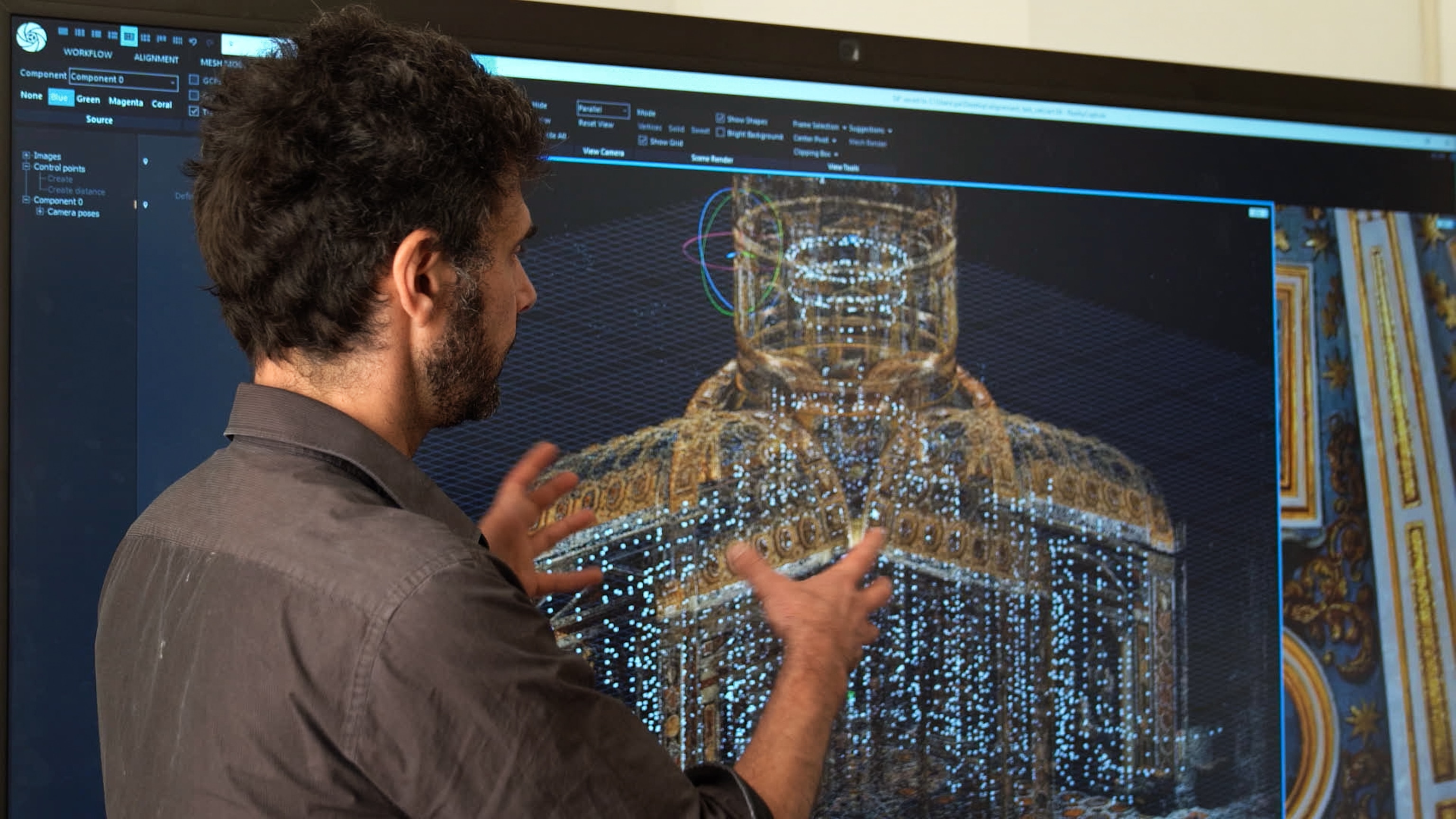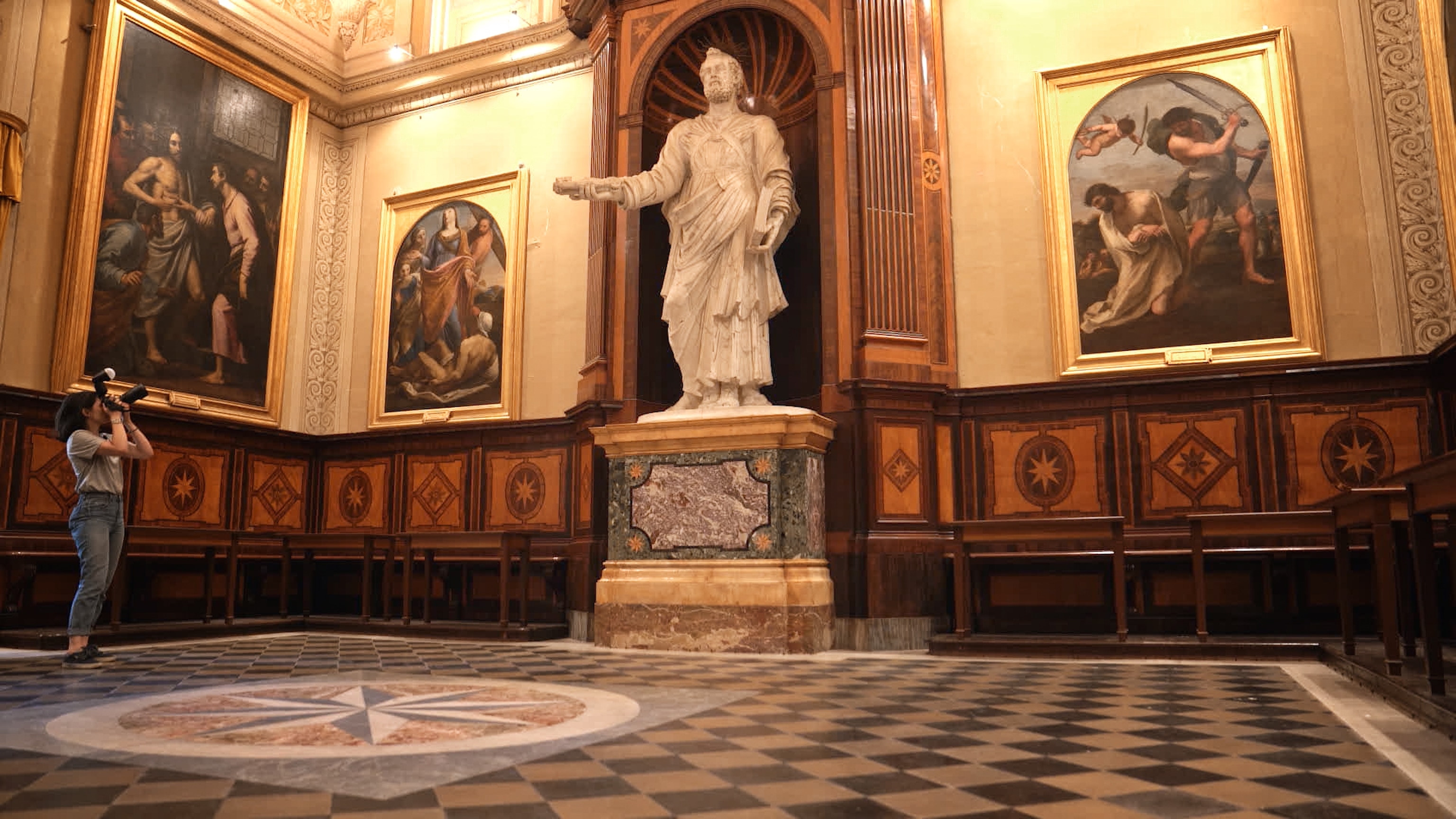Immersive technology reveals new views of St. Peter’s Basilica
Advanced technology meets Renaissance architecture in a groundbreaking project that’s transforming how visitors experience one of the world’s most iconic religious landmarks.
Some 50,000 people visit St. Peter’s Basilica in Vatican City daily. The 500-year-old structure, with its 448-foot-high dome, finely detailed mosaics, and imposing marble statues, is a monument to human ingenuity and the power of spiritual inspiration.
Now, immersive technologies are making it more accessible, both to in-person visitors and people all over the world. Even viewers at home can log in to a new interface to view a high-fidelity digital twin built using hundreds of thousands of photos through a process called photogrammetry and artificial intelligence (AI).

The digital twin is the result of a trailblazing partnership between the Vatican, Microsoft, and Iconem, a French startup specializing in digitizing sites of cultural significance. Together, they’ve combined expertise in technology and cultural heritage and preservation to evoke the feelings of awe inspired by the Basilica itself—even from afar.
As the Basilica’s archpriest, Cardinal Mauro Gambetti, said during the project’s unveiling in late 2024, interacting with the digital twin is akin to gazing into a “starry sky on a summer night."
Building a digital twin
Creating the Basilica’s digital twin required an unprecedented fusion of ancient architecture and cutting-edge technology. Over three weeks, teams from Iconem used drones, specialized cameras, and laser scanning technology to capture more than 400,000 high-resolution images of every corner of the Basilica.


“Photogrammetry is technology that enables you to capture visible reality with thousands of pictures in 3D,” explains Yves Ubelmann, Iconem’s founder and CEO. “For a very complex place like this, with its huge cupola roof, you need to process everything to get a full copy of the monument.” Such pixel-by-pixel processing of the massive amount of data the images represented was the job of advanced AI provided by Microsoft’s AI for Good Lab.
Juan Lavista Ferres, chief data Scientist at the AI for Good Lab, oversaw the development of specialized AI algorithms for the project. According to Ferres, these algorithms first learned to identify specific features like tiles and cracks through human-labeled training data. Once trained, the AI could automatically detect and analyze these features throughout the Basilica’s complex architecture. “The first thing that surprised us was the magnitude and size of the building,” Ferres says. “The other thing that surprised us is how technology can help on the preservation perspective.”
This combination of human expertise and AI capabilities resulted in what Microsoft Vice Chair and President Brad Smith calls “a powerful example of how innovation can connect people to history.”
The project has also blazed a trail for digital preservation projects to come, according to Smith. “This project shows the future of how AI can enhance cultural assets,” he says. “First, we can use AI to enable people to explore sites like this in a way they could never have done before. Second, we're able to use AI algorithms and all of this photographic imagery to identify the cracks, the places where tile may be missing. And that helps us restore what is here. So it's really something not only for this generation, but for generations to come."
Experiencing history
The digital twin has opened up new ways to experience the Basilica, both for in-person visitors and virtual pilgrims.
“We’re looking at the first copy, or rather, the first twin of St. Peter’s Basilica,” says Father Enzo Fortunato, director of communications for St. Peter's Basilica. “It allows us to explore the Basilica and take in parts that are not perceptible or clearly visible to the naked eye.”
The on-site Pétros ení exhibition, which is expected to launch in early 2025, offers two distinct experiences: a public exhibit accessible to all visitors and a specialized, reservation-only “Octagons” experience providing a more focused journey through select artifacts and spaces.
Through interactive kiosks and digital platforms, visitors can explore detailed visualizations of specific areas and learn about their significance. The project also includes an interactive website that allows people worldwide to explore previously inaccessible areas of the Basilica, including the intricate artwork high in the dome.
"I believe it adds to the spiritual experience of pilgrims coming to Rome. Going through it myself gave me even more insight into the memory of Saint Peter, his life, and what he stood for. It brings that history to life."Brad Smith, Vice Chair and President, Microsoft
Preserving sacred heritage
Beyond enhancing accessibility, the Basilica’s digital twin indeed serves as a crucial tool for preservation. Ferres confirms that the AI analysis has revealed structural vulnerabilities that were previously invisible to the human eye, including missing mosaic tiles and subtle fissures. This information is proving invaluable for guiding restoration efforts and ensuring the Basilica’s long-term preservation.
“A 3D model is not only an image of something; it’s a full database,” Ubelmann explains. “You can put a lot of information in it. I like the idea of keeping an archive and transmitting these assets to the next generation, but I also like this idea of understanding better what we cannot see even when we are inside the monument.”
The project represents a new frontier in cultural preservation, demonstrating how AI can help protect and share some of humanity’s greatest achievements. As Cardinal Gambetti said, “The new tools act like a telescope or spaceship for better viewing,” allowing us to see this magnificent structure in ways its builders could never have imagined.
The initiative arrives at a crucial time as the Vatican is set to welcome an estimated 35 million pilgrims for the 2025 Holy Year Jubilee. While the digital experience can’t replace the full impact of visiting in person, it ensures that the Basilica’s spiritual and cultural significance remains accessible to millions of people worldwide who may never have the opportunity to visit Rome.
"It is our wish that this project can really make each of us have a spiritual experience."Father Enzo Fortunato, Communications Director of St Peter’s Papal Basilica Fabbrica di San Pietro, Vatican
And the technology serves another vital purpose: preservation for future generations. If any part of the Basilica were to be damaged or degraded over time, the digital twin provides an exact record of its state at the time of digital capture. This detailed documentation could prove invaluable for future restoration work, allowing conservators to reference precise measurements and architectural details that might otherwise be lost to time.
To learn more about the La Basilica di San Pietro digital preservation project, visit https://virtual.basilicasanpietro.va/en.